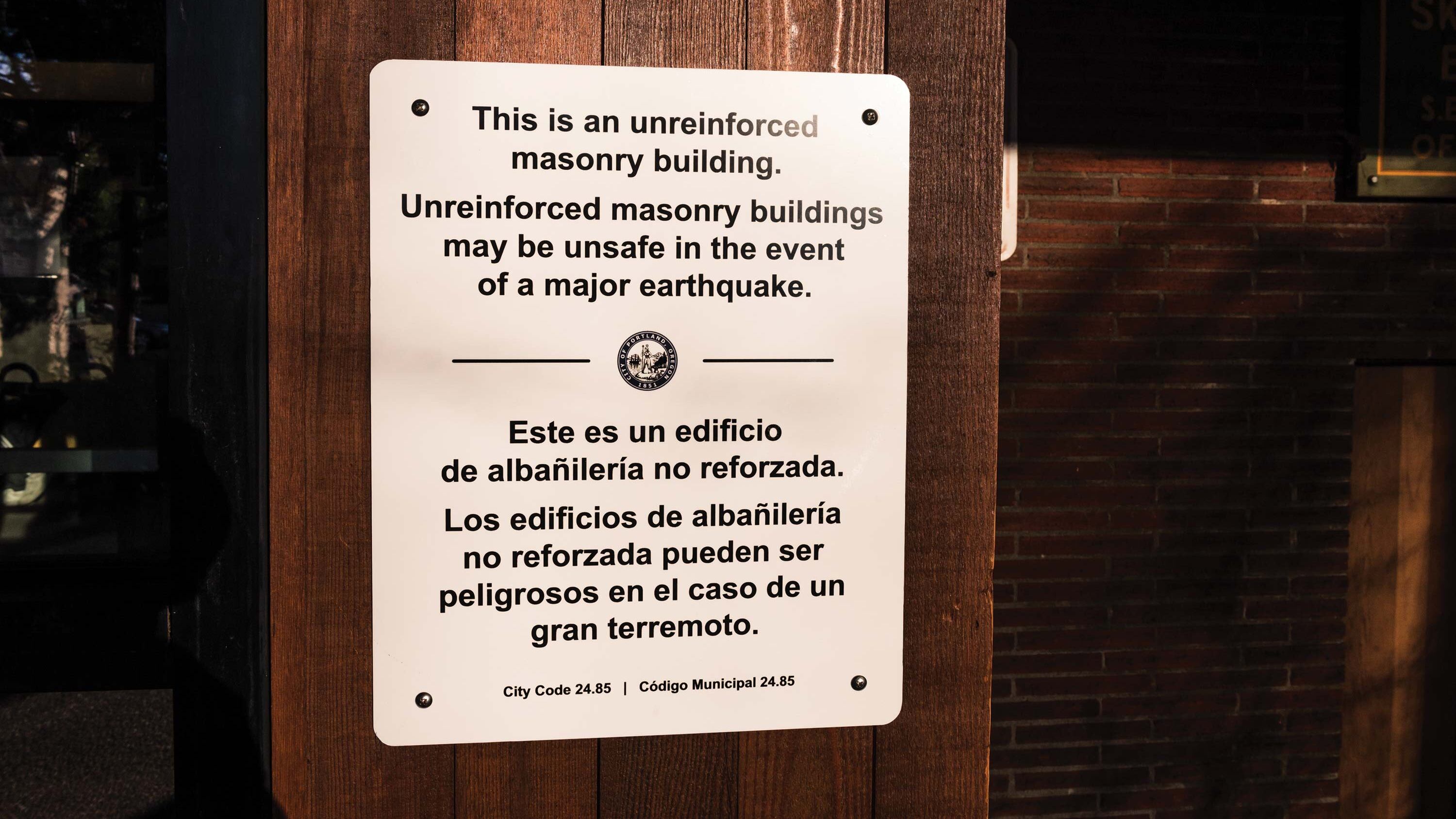My local tire store has an official-looking sign on the wall that says something like "This is an unreinforced masonry building, which may be unsafe in an earthquake." Do we really need yet another thing we can't control to worry about right now? —Shaky
Shaky, I've got good news for you: Terrifying signs like the one you're describing are rapidly becoming a thing of the past.
Not because the buildings that display such signs are being repaired, mind you—you're just as likely to get brained by a cinder block in one of them as you ever were—but because the city has agreed to stop making building owners display them.
In June 2018, the Portland City Council passed an ordinance requiring all unreinforced masonry, or URM, buildings to be seismically retrofitted by 2038. In the meantime, building owners were legislatively enjoined to scare the bejesus out of their customers by posting ominous signs like the one you saw.
There were a couple of problems with this.
For starters, a federal judge found that the signs violated building owners' First Amendment rights. The court held that government is allowed to compel speech when it provides specific safety instructions, like a sign that says "In case of fire, break glass." But the URM placards didn't tell viewers to do anything in particular. Legally, they were the equivalent of a sign that says "In case of fire, you're fucked."
Also, while the law in its majestic egalitarianism applied to all building owners equally, in practice the burden fell (as burdens are wont to do) disproportionately on those least able to afford it.
After all, if Nike finds one of its buildings seismically deficient, it can simply replace it with a new structure built out of gleaming, steel-reinforced hundred-dollar bills. But if a small business (or, say, a historically African American church) owns a URM building that needs a few million dollars' worth of upgrades, it's a major existential threat—and the city wasn't offering any help with the construction costs.
Seeing the writing on the unreinforced masonry wall, the City Council reversed itself last October, repealing both the retrofitting mandate and the placard requirement and boldly referring the still-unsolved problem of URM structures to a committee. That'll show 'em.

